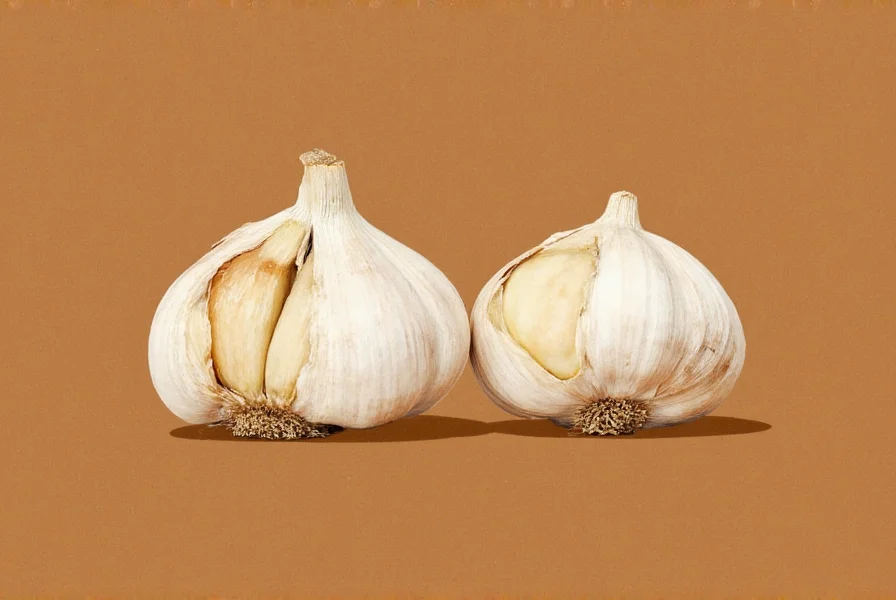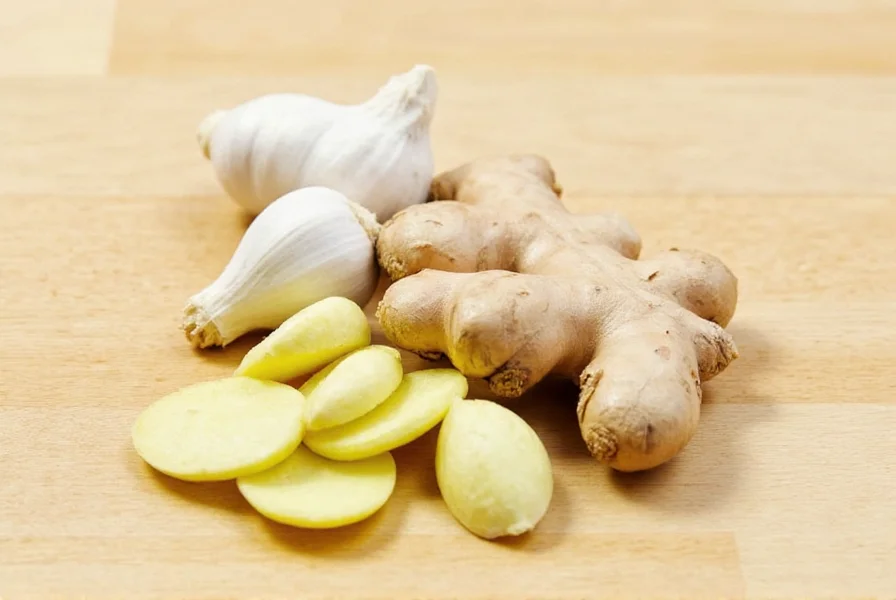Understanding how to properly use ginger and garlic can transform your cooking from ordinary to extraordinary. These two ingredients have been staples in kitchens worldwide for centuries, each bringing unique characteristics that complement and enhance the other when used together.
The Flavor Science Behind Ginger and Garlic
While often used together, ginger and garlic have distinctly different flavor compounds and culinary properties. Ginger contains gingerol, which gives it that characteristic spicy warmth, while garlic's allicin provides its signature pungency. When these ingredients are crushed or chopped, enzymatic reactions occur that intensify their flavors.
Professional chefs understand that the timing of when you add ginger and garlic to a dish dramatically affects the final flavor profile. Garlic burns more easily than ginger, so many cooking techniques call for adding ginger first, then garlic shortly after to prevent bitterness.
Optimal Ginger to Garlic Ratios for Different Cuisines
The perfect ginger garlic ratio varies significantly across culinary traditions. Understanding these proportions can help you authentically recreate dishes from different regions:
| Cuisine Type | Typical Ratio (Ginger:Garlic) | Common Applications |
|---|---|---|
| Indian | 1:1 to 2:1 | Curry bases, marinades, dals |
| Chinese | 1:1 | Stir-fries, sauces, dumpling fillings |
| Middle Eastern | 1:2 to 1:3 | Hummus, meat rubs, stews |
| Caribbean | 1:1.5 | Jerk seasonings, stews, rice dishes |
Preparing Ginger and Garlic for Maximum Flavor
How you prepare these ingredients significantly impacts their flavor contribution. For ginger, peeling with a spoon rather than a knife preserves more of the flavorful flesh. Fresh ginger should be grated on a microplane for even distribution in sauces and marinades.
Garlic benefits from different preparation methods depending on the desired intensity. Whole cloves provide milder flavor, while minced garlic delivers maximum pungency. Many professional kitchens use the 'flat of the knife' technique to crush garlic, which releases more flavor compounds than chopping alone.

Creating the Perfect Ginger Garlic Paste
A versatile ginger garlic paste is invaluable for quick meal preparation. The ideal homemade paste uses equal parts peeled ginger and garlic cloves blended with a small amount of neutral oil to prevent browning. For a standard batch:
- Use 1 cup peeled ginger and 1 cup garlic cloves
- Add 2-3 tablespoons of vegetable or grapeseed oil
- Process until completely smooth
- Store in airtight containers with oil layer on top
This ginger garlic paste recipe yields enough for multiple meals and keeps refrigerated for up to two weeks or frozen for three months. Many home cooks find that making ginger garlic paste in bulk saves significant time during weekly meal preparation while ensuring consistent flavor in their dishes.
Storage Techniques for Maximum Freshness
Proper storage extends the shelf life of both ingredients significantly. Whole garlic bulbs keep best in cool, dark places with good air circulation—never refrigerate whole bulbs as this encourages sprouting. Peeled cloves can be stored in vinegar or oil in the refrigerator for short-term use.
Fresh ginger root lasts up to three weeks when stored in a paper bag in the vegetable crisper. For longer storage, peel and freeze ginger whole—it can be grated directly from frozen. Many professional kitchens maintain a steady supply of ginger garlic paste frozen in ice cube trays for convenient portioning.
Global Dishes Featuring Ginger Garlic Foundations
From Chinese stir-fries to Indian curries, the ginger garlic combination serves as the flavor cornerstone for countless traditional dishes. In Thai cuisine, this duo forms the base for many curry pastes alongside lemongrass and galangal. Japanese cooking often features grated ginger and garlic in ponzu sauces and marinades.
When exploring ginger garlic marinade ideas, consider how different cultures utilize this combination. Korean cuisine frequently blends these ingredients with soy, sesame, and sweeteners for bulgogi. Caribbean jerk seasoning relies on a potent ginger garlic base enhanced with allspice and scotch bonnet peppers.

Substitution Options When Ingredients Are Unavailable
When fresh ginger or garlic isn't available, proper substitutions can save your recipe. For ginger, galangal provides a similar but more floral note, while ground ginger works in cooked dishes (use 1/4 teaspoon powder for each tablespoon fresh). For garlic, shallots offer the closest flavor profile in savory applications.
Understanding ginger garlic substitution options prevents recipe failures. In many cases, pre-made ginger garlic paste can replace fresh when properly adjusted for concentration. When using dried alternatives, remember they lack the bright, fresh notes of raw ingredients but work well in long-simmered dishes.
Practical Cooking Applications and Tips
The magic of ginger and garlic happens when you understand how to incorporate them properly into your cooking process. For sautéing, heat your oil until shimmering but not smoking, then add ginger first (it takes slightly longer to release flavors), followed by garlic about 30 seconds later.
When making ginger garlic oil at home, slowly infuse low heat with sliced ingredients to extract maximum flavor without burning. This aromatic oil becomes incredibly versatile for finishing dishes, dressing vegetables, or as a dipping sauce base. Many professional chefs maintain small batches of this infused oil for instant flavor enhancement.
Conclusion: Mastering the Ginger Garlic Foundation
Mastering the use of ginger and garlic forms the cornerstone of flavorful cooking across numerous culinary traditions. By understanding their individual properties, optimal ratios, preparation methods, and storage techniques, home cooks can dramatically improve their everyday cooking. Whether you're creating simple weeknight meals or elaborate dishes, this dynamic duo provides the aromatic foundation that transforms ingredients into memorable meals.
Frequently Asked Questions
What is the best way to store ginger garlic paste?
Store ginger garlic paste in an airtight container with a thin layer of oil on top to prevent oxidation. It will keep refrigerated for 2-3 weeks or frozen for up to 3 months. For convenient portioning, freeze in ice cube trays then transfer to freezer bags.
Can I substitute powdered ginger and garlic for fresh in recipes?
Yes, but with adjustments. Use 1/4 teaspoon of powdered ginger for each tablespoon of fresh ginger, and 1/8 teaspoon of garlic powder for each clove of fresh garlic. Note that dried versions lack the bright, fresh notes of raw ingredients and work best in cooked dishes rather than raw applications.
Why does my garlic burn before my ginger is cooked?
Garlic burns more quickly than ginger due to its lower burning point. To prevent this, add ginger to the hot oil first and let it cook for 30-60 seconds before adding the garlic. This technique ensures both ingredients reach their flavor peak without burning.
What's the ideal ginger to garlic ratio for curry dishes?
For most Indian and Thai curries, a 2:1 ratio of ginger to garlic works best. This means two parts ginger to one part garlic by volume. However, regional variations exist—South Indian curries often use equal parts, while some Thai curries use slightly more garlic.
How can I reduce the strong aftertaste of garlic?
To reduce garlic's strong aftertaste, remove the green sprout from the center of each clove before using. Adding a small amount of acid (lemon juice or vinegar) at the end of cooking can also mellow the flavor. For raw applications, soaking minced garlic in cold water for 10 minutes before use reduces its intensity.











 浙公网安备
33010002000092号
浙公网安备
33010002000092号 浙B2-20120091-4
浙B2-20120091-4